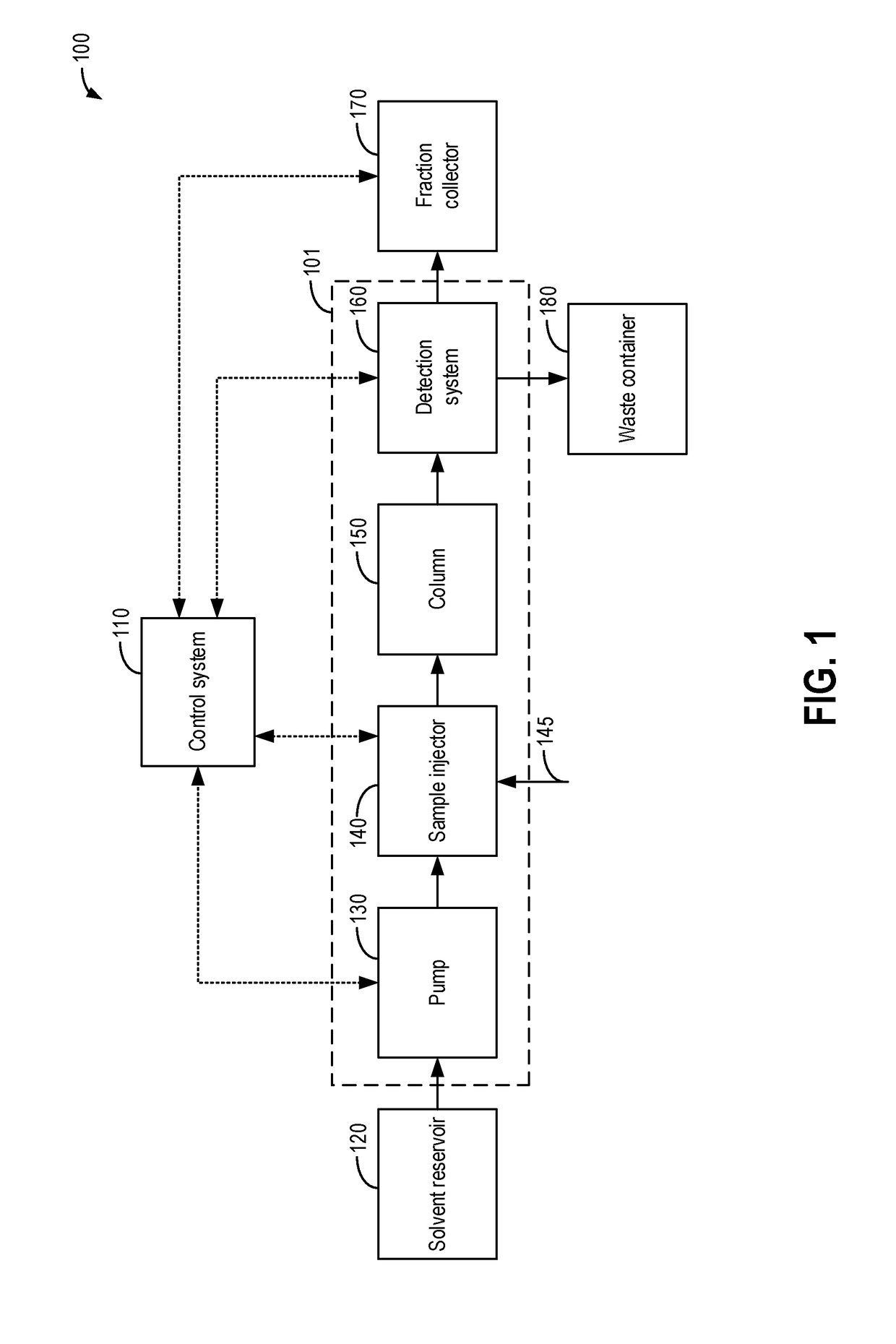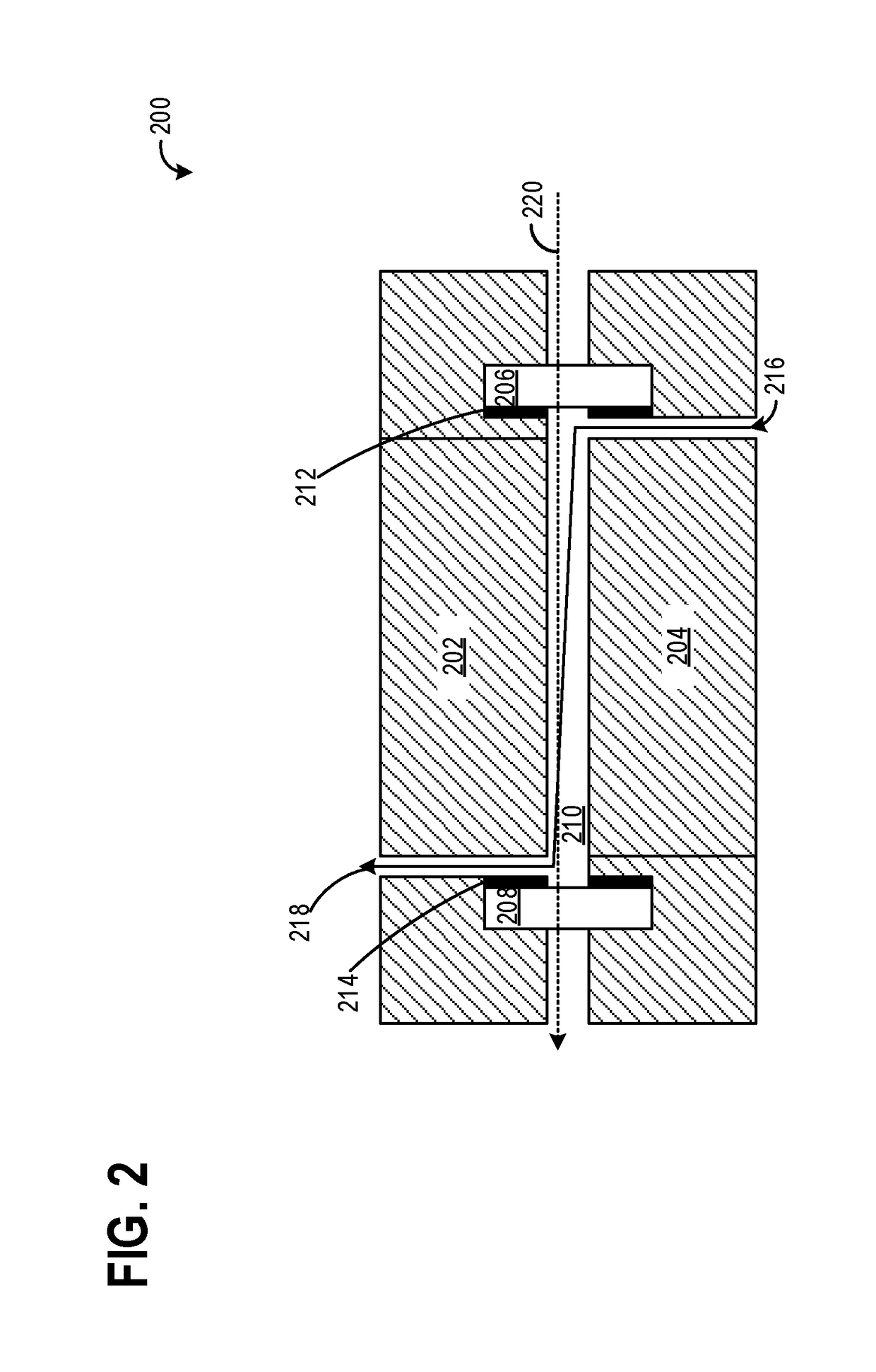Integrated illumination-detection flow cell for liquid chromatography
a flow cell and liquid chromatography technology, applied in the field of integrated illumination detection flow cells for liquid chromatography, can solve the problems of increasing both the time and the reducing the signal-to-noise ratio, and unsatisfactory thermal effects on samples, etc., to achieve the effect of increasing the size of the hplc system, reducing the time and cost of operating the hplc system, and substantial optical path length
- Summary
- Abstract
- Description
- Claims
- Application Information
AI Technical Summary
Benefits of technology
Problems solved by technology
Method used
Image
Examples
first embodiment
[0040]FIG. 3 illustrates an integrated illumination-detection flow cell 300. As an example, the integrated illumination-detection flow cell 300 may be included in a detection system of an HPLC system, such as detection system 160 of HPLC system 100 shown in FIG. 1. The integrated illumination-detection flow cell 300 may include a flow cell 308 with a flow channel 306, similar to the flow cell 200 illustrated in FIG. 2. The flow channel 306 may include an inlet 322 and an outlet 324, wherein a liquid sample may flow in through the inlet 322 along a path indicated by a dashed arrow 325 through the flow channel 306 and exit through the outlet 324. A flow rate of the liquid sample through the flow channel 306 may be regulated by a flow regulator (not shown) upstream of the inlet 322. The flow channel 306 may be at least partially inside the flow cell 308.
[0041]The flow cell 308 may include a plurality of diode pairs 311, each of the diode pairs 311 including a light source 312 and a pho...
second embodiment
[0050]FIG. 4 shows an integrated illumination-detection flow cell 400, which may be used in a liquid chromatography system (e.g., HPLC system 100 of FIG. 1). The integrated illumination-detection flow cell 400 may share common features and / or configurations as those already described above with reference to FIG. 3. Components previously introduced in FIG. 3 are numbered similarly and not reintroduced.
[0051]The configuration of the flow channel 306 along the flow cell 308 in the integrated illumination-detection flow cell 400 is the same as described above with reference to FIG. 3, except for an optical element between each light source 312 and the first optically transparent wall 319 of the flow channel 306. The flow cell 308 includes the plurality of diode pairs 311 along the bottom surface 315, wherein each of the diode pairs includes the light source 312 and the reference diode 310. Light emitted from each light source 312, which may be an LED emitting light of specific wavelengt...
PUM
| Property | Measurement | Unit |
|---|---|---|
| wavelength | aaaaa | aaaaa |
| wavelength | aaaaa | aaaaa |
| wavelength | aaaaa | aaaaa |
Abstract
Description
Claims
Application Information
 Login to View More
Login to View More - R&D
- Intellectual Property
- Life Sciences
- Materials
- Tech Scout
- Unparalleled Data Quality
- Higher Quality Content
- 60% Fewer Hallucinations
Browse by: Latest US Patents, China's latest patents, Technical Efficacy Thesaurus, Application Domain, Technology Topic, Popular Technical Reports.
© 2025 PatSnap. All rights reserved.Legal|Privacy policy|Modern Slavery Act Transparency Statement|Sitemap|About US| Contact US: help@patsnap.com



